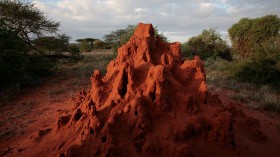After coming into contact with a visitor to Yellowstone National Park, a newborn bison calf had to be euthanized as per park official decisions.
Why Euthanize a Newborn Bison Calf?
In response to yet another unpleasant incident between a park visitor and animals, officials at Yellowstone National Park claim they faced the decision to euthanize a newborn bison calf.
According to the news release, a bison calf was disturbed on Saturday night by an unidentified man after getting separated from its mother and herd while crossing the Lamar River in the park.
The man pushed the calf out of the river and onto the road as it fought, according to NPS in the news release.
Visitors later observed the calf approaching and trailing both cars and people, posing a danger to those in the area, according to NPS.
According to NPS, human interference can cause animals to reject their progeny. The bison calf had been abandoned by its herd and posed a danger to oncoming vehicles and pedestrians along the road, so park rangers decided to put it to death after failing to reconcile it with its herd, CNN reports.
Yellowstone National Park Visitor
According to park laws, visitors must maintain a distance of at least 25 yards from bison, elk, and the majority of other animals, and 100 yards from bears and wolves. According to NPS, approaching animals in their natural habitat can compromise their survival and general well-being.
In the news release, Yellowstone National Park included a picture of the man who was bringing the bison calf out of the river.
According to Yellowstone National Park, if the individual is found guilty of any misconduct, he could be punished with a Class B misdemeanor and face up to six months in prison and a $5,000 fine. According to the park, the charge would also include approaching wildlife and disturbing wildlife.
Also Read: Drought in Missouri River Bares Fossil of Ancient Bison Skull Around 10,000 Years Old
Bison
The bison is the biggest land mammal in North America and can reach heights of six feet. A female can weigh up to 900 pounds, whereas a man can weigh up to a ton. Bison can be recognized by several distinctive characteristics in addition to their enormous size. The hump on their backs is one of the most prominent features of a bison.
Their dark brown fur, which can become very long, particularly on the face and head, is another distinguishing feature. In addition, bison develop a long beard and mane. A bison's head is enormous and has a substantial skull. When fighting, bison collide their heads or horns. The small, curving, black horns on male and female bison can reach a length of two feet.
Bison originally roamed across a large portion of North America, which included central Canada and the majority of the interior United States, prior to human influence. The beaches and deserts were the only areas free of bison. Savannas, open plains, and grasslands are favorites of American bison. Even though they are enormous, bison still have to be concerned about predators. A wolf group or grizzly bear can easily feast on buffalo calves, according to The National Wildlife Federation.
Related Article: Bears Done Hibernating in Yellowstone, Officials Warn Visitors
© 2024 NatureWorldNews.com All rights reserved. Do not reproduce without permission.





